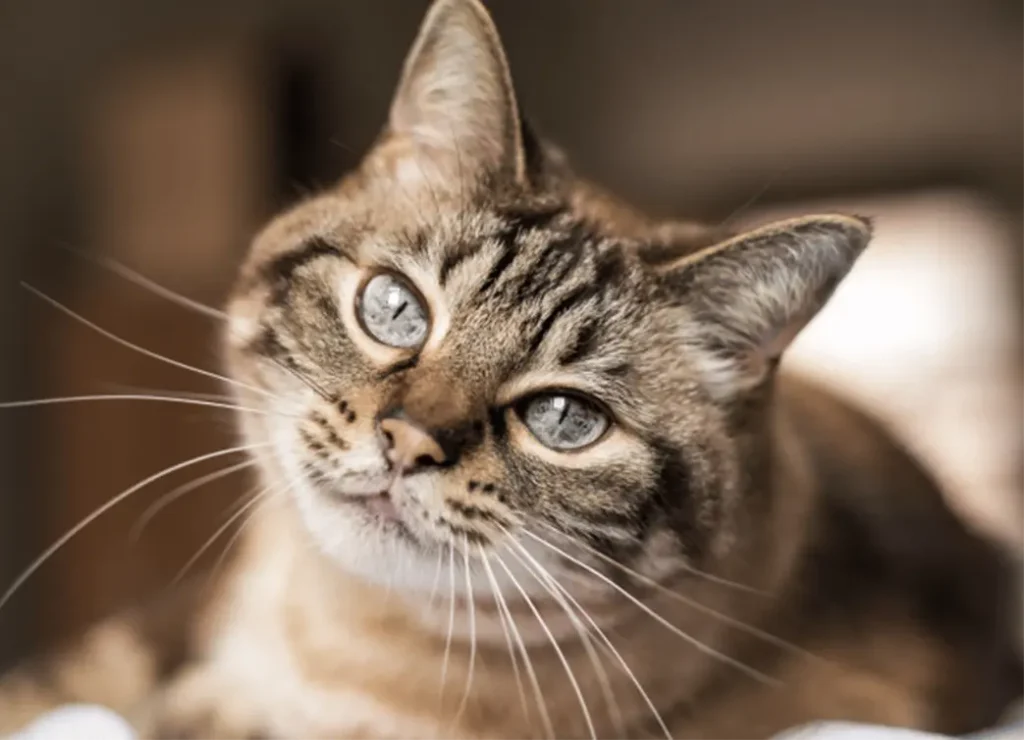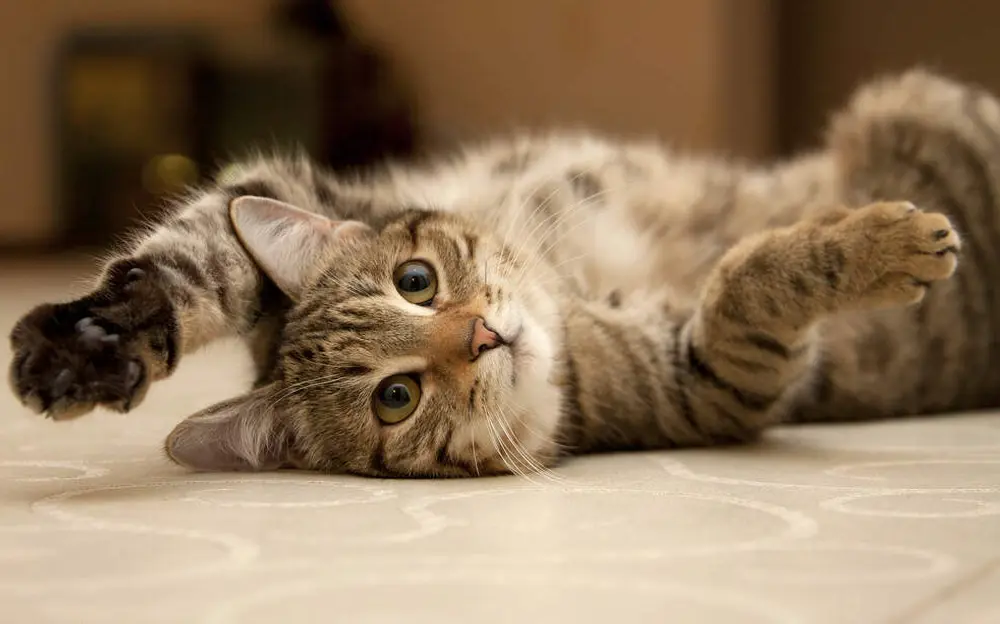What Are the Signs of a Happy Cat?

Introduction
Cats are fascinating creatures, and understanding their behavior is crucial for their well-being. This article aims to explore the signs that indicate a cat is content and fulfilled.
A. Brief Overview of the Importance of Understanding Cat Behavior
Understanding cat behavior helps us meet their needs and ensure they live happy lives. Cats communicate differently from humans, so knowing their behaviors helps us understand what they’re feeling.
B. Statement of the Purpose of the Article: To Identify Signs of a Content and Fulfilled Cat
The purpose here is to highlight specific behaviors that indicate a cat is happy and satisfied in its environment. By recognizing these signs, cat owners can ensure their feline companions are thriving emotionally and physically.

Physical Indicators of a Happy Cat
Cats can show they’re feeling good through their appearance and actions.
A. Glossy Coat and Healthy Skin
When a cat’s coat is shiny and smooth, and their skin is free from flakes or sores, it usually means they’re healthy and content. Brushing your cat regularly can help keep their coat looking nice.
B. Bright, Clear Eyes
A happy cat will have bright, alert eyes without any discharge or redness. If your cat’s eyes look dull or watery, it might be a sign they’re not feeling well and should see a vet.
C. Active and Playful Behavior
Happy cats love to play and explore their environment. If your cat is chasing toys, pouncing on imaginary prey, or engaging in other playful activities, it’s a good sign they’re content and fulfilled.
D. Healthy Appetite and Weight Maintenance
A cat that’s happy and healthy will have a good appetite and maintain a stable weight. They’ll eagerly eat their meals and won’t show any sudden changes in weight. Providing a balanced diet and monitoring their food intake can help ensure they stay healthy.

Behavioral Indicators of a Happy Cat
Understanding your cat’s behavior can give you insight into their happiness.
A. Purrs and Vocalizations
When a cat purrs, it usually means they’re content and comfortable. They might also make other happy sounds like chirps or meows. Pay attention to these vocalizations as they can tell you a lot about how your cat is feeling.
B. Relaxed Body Language
A content cat typically displays relaxed body language. This means their muscles are loose, their tail is held upright but not stiff, and their ears are in a natural position. If your cat’s body looks tense or they’re hunched over, they might be stressed or unhappy.
C. Engages in Social Interactions with Humans and/or Other Pets
Cats are social animals, and happy cats enjoy spending time with their human companions or other pets in the household. They might seek out cuddles, rub against your legs, or play with other animals. These interactions strengthen their bond and contribute to their overall well-being.
D. Displays Curiosity and Exploration Behavior
Happy cats are curious by nature and enjoy exploring their surroundings. They might investigate new objects, sniff around different areas of the house, or peer out the window to watch birds or passersby. Encouraging this curiosity by providing toys and environmental enrichment can keep your cat engaged and content.
Environmental Factors Influencing Cat Happiness
A cat’s surroundings play a big role in how happy they feel.
A. Comfortable and Stimulating Living Environment
A happy cat needs a cozy and interesting place to live. This means having soft beds, cozy blankets, and maybe even some fun toys to play with.
B. Access to Clean Water, Food, and Litter Box
Just like humans, cats need access to clean water, food, and a tidy litter box. Making sure these basics are always available keeps your cat happy and healthy.
C. Opportunities for Exercise and Mental Stimulation
Cats need both physical and mental exercise to stay happy. Providing toys to chase, puzzles to solve, or even just some time to roam around can keep them entertained and fulfilled.
D. Presence of Safe Hiding Spots and Elevated Areas
Even though cats love attention, they also need their space sometimes. Having cozy hiding spots where they can relax undisturbed, as well as high perches where they can survey their territory, helps them feel secure and content.
Understanding Cat Communication Signals
Cats have their language to communicate how they feel.
A. Interpretation of Different Meows, Purrs, and Body Postures
When your cat meows, purrs, or moves in certain ways, they’re trying to tell you something. Paying attention to these signals helps you understand what they need or want.
B. Recognition of Tail Positions and Movements
A cat’s mood can often be understood through its tail. A high, straight tail might mean they’re happy, while a low, flicking tail could indicate they’re agitated or annoyed.
C. Understanding of Facial Expressions and Ear Positions
Just like humans, cats use their faces to express emotions. Watch for signs like relaxed eyes or forward-pointing ears, which usually mean they’re content. Narrowed eyes or flattened ears might suggest they’re upset or scared.
D. Importance of Observing Context and Consistency in Behavior
Context is key when understanding cat communication. For example, a cat might purr when they’re happy but also when they’re in pain. By observing their behavior over time and in different situations, you can better interpret what they’re trying to communicate.
Signs of Stress or Discontent in Cats
Sometimes, cats can show signs that they’re not feeling happy.
A. Withdrawal or Hiding Behavior
If your cat starts hiding away or spending more time alone than usual, it could be a sign they’re feeling stressed or unhappy. Keep an eye on their hiding spots and try to figure out what might be bothering them.
B. Excessive Grooming or Aggression
Cats might groom themselves more than usual when they’re stressed, which can lead to bald patches or irritated skin. They might also become more aggressive towards people or other pets if they’re feeling anxious or threatened.
C. Loss of Appetite or Weight Changes
Just like humans, cats might lose their appetite when they’re not feeling well. If your cat suddenly stops eating or starts losing weight, it’s important to take them to the vet to rule out any underlying health issues.
D. Avoidance of Human or Pet Interaction
If your cat starts avoiding contact with you or other animals in the household, it could be a sign they’re feeling stressed or uncomfortable. Pay attention to their body language and try to figure out what might be causing their distress.
Conclusion
Let’s sum up what we’ve learned about happy cats.
A. Summary of Main Points Covered in the Article
We’ve talked about how cats show they’re happy through their behavior, appearance, and environment.
B. Emphasis on the Importance of Understanding Cat Behavior for Their Well-being
Understanding your cat’s behavior is super important for making sure they’re happy and healthy. It helps you meet their needs and keep them feeling loved and secure.
C. Encouragement for Cat Owners to Observe and Respond to Their Cat’s Needs for a Happy and Fulfilling Life
By paying attention to your cat’s signals and providing them with a safe, stimulating environment, you can help ensure they live a happy and fulfilling life. So, keep watching, listening, and responding to your furry friend’s needs!
People also ask
How can I determine if my cat is happy?
You can tell if your cat is happy by observing its body language and behavior. If it’s relaxed, purring, and playful, it’s likely content.
How do you know if a cat is nice?
A cat that approaches you calmly, purrs, and rubs against you is usually friendly and nice.
How can you tell if a cat is not happy?
Signs of an unhappy cat include hiding, aggressive behavior, loss of appetite, and excessive grooming.
How can you tell if a cat is lonely?
Lonely cats may seek more attention, meow excessively, or display destructive behavior.
Is it fine to gaze into a cat’s eyes?
Yes, it’s okay to look into a cat’s eyes. Eye contact is a common way for them to communicate.
Do cats enjoy being loved?
Many cats enjoy affection, such as petting, cuddling, and being held, but preferences vary.



